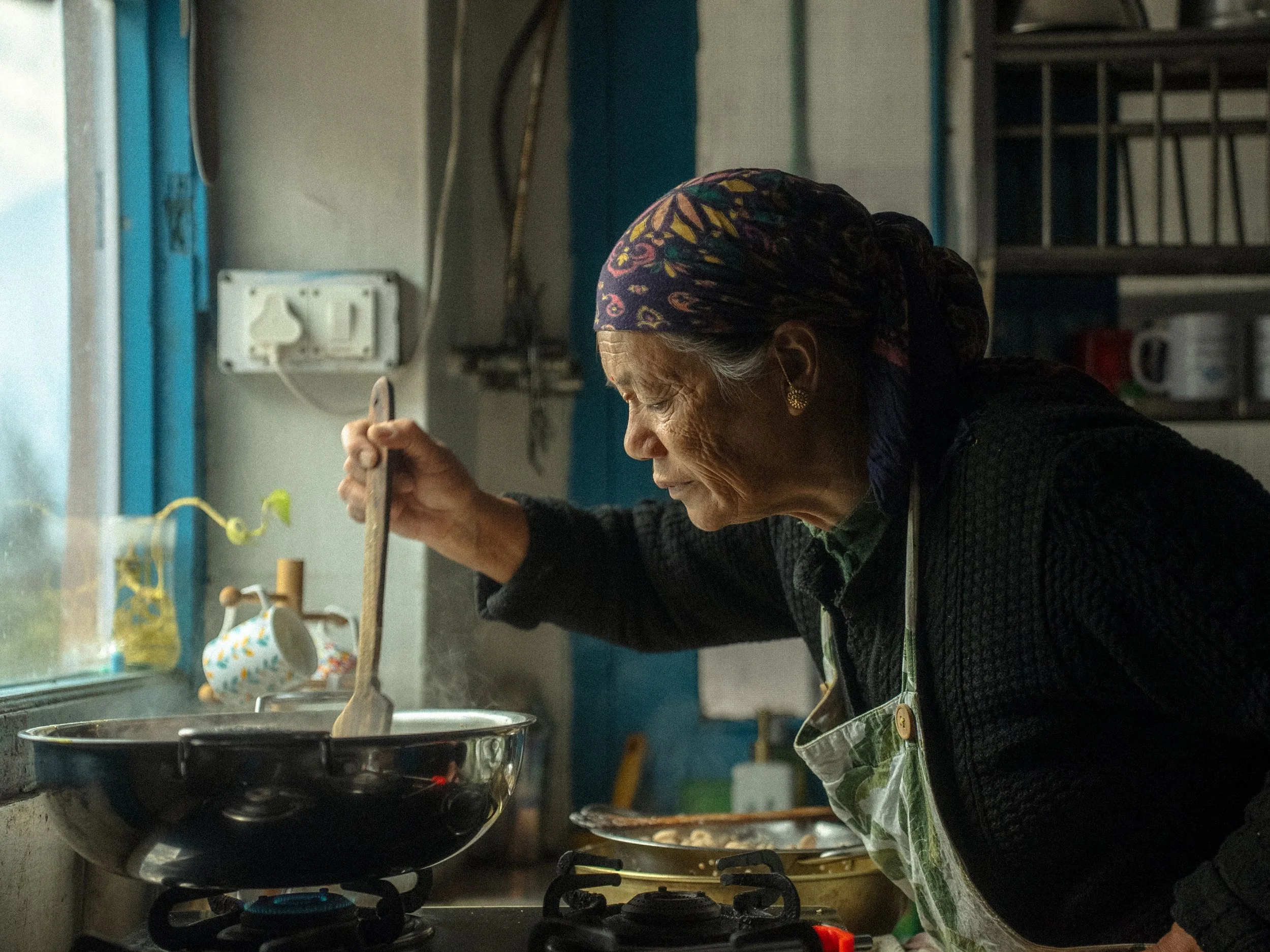An Unconventional Khapar Poli

Khapar poli, a Maharashtrian pancake served with rabri, is traditionally made with fermented rice and grated coconut paste. But in a pinch, Shoma Abhyankar's aaji makes a clever substitution that results in a recipe dearly loved by many generations of the family.
Widowed at an early age, raising four almost-teenage boys, aaji, my grandmother, learnt to make the most of available sources and be thrifty with everything — including food. She found ways to recycle and reuse. Leftovers were never thrown away; they would instead end up as fillings in parathas or kachoris. White gourd and bitter gourd peels were sautéed and mixed with gram flour and tempered, to make a new sabzi. She even experimented with fresh green-gram by grinding it coarsely and cooking in milk and sugar. It resulted into a delicious barfi.
Yellow butter melting into hot aaloo parathas always reminds me of aaji. In response to my childhood tantrums, demanding store-bought yellow butter (I preferred its salty flavour over home-made white unsalted butter), aaji vanished into the kitchen and triumphantly produced that same delicious yellow butter for me. It was only years later that I realised how cleverly she had pacified (and fooled) a wilful 5-year-old — adding yellow food colour and salt to homemade butter. But that was Aaji, always finding ways to work around available ingredients, to put together dishes that would almost always turn out better than the original.
A dish she experimented with, to much success, was khapar poli. Named after clay-tiles called khapar in Marathi, it is traditionally made with coarsely ground rice batter, and fermented overnight. Served with sweetened milk, this pancake is traditionally roasted on a clay tawa, over firewood.
Sometimes when the weather wouldn’t cooperate, the rice batter would not ferment, and aaji’s khapar poli would not be as fluffy as it was meant to be. But my inventive grandmother who loved khapar poli refused to depend on the whims of nature to enjoy her favourite desert. She decided to experiment with humble aata instead. A few hit-and-misses later, she perfected the proportions. The resulting khapar poli was a hit in the family — both for its easy ingredients, flexibility of time, and earthy flavour.
Aaji is no more, but her recipe lives on among her grandchildren, daughters-in-law, and extended family. This is her quick and easy recipe for khapar poli.
Aaji’s Unconventional Recipe for Khapar Poli with Rabri
Ingredients
1 cup whole wheat flour, dry roasted to a pinkish colour
Refined oil, as needed
Water, as needed
2 tbsp baking soda
Method
Dry roast the whole wheat flour until it takes on a pink tinge.
Add refined oil bit by bit, until the flour holds shape when pressed into a ball.
Add water to make batter of pouring consistency like that of pancake
Add pinch of baking soda separately in each ladle of batter.
Pour on a hot non-stick girdle/tava
As soon as little bubbles appear on the pancake, cover for few seconds and allow to cook.
This pancake is cooked on one side only.
Serve with rabri, or thick, sweetened milk
How to make Rabri
1 L milk
8 tsp sugar
Nutmeg, a pinch
Cardamom powder, a pinch
6 pistachios, sliced
Method
Boil the milk and sugar till they thicken and reduce by half. (Add sugar at your discretion, the quantities above are to my taste).
Cool and season with nutmeg and cardamom powder.
Add a few sliced pistachios
Shoma Abhyankar is an independent writer based out of Pune.
ALSO ON THE GOYA JOURNAL







